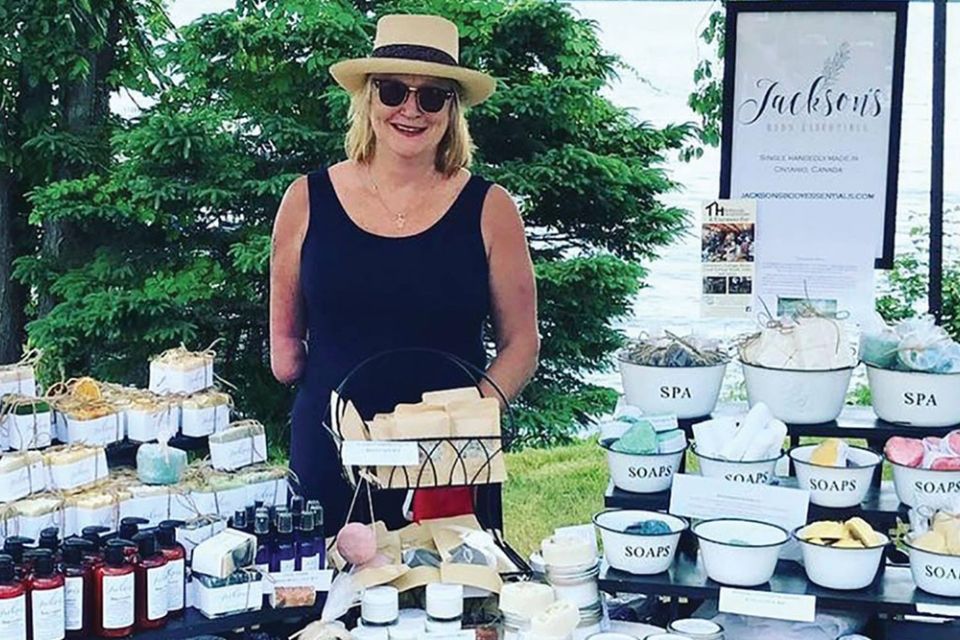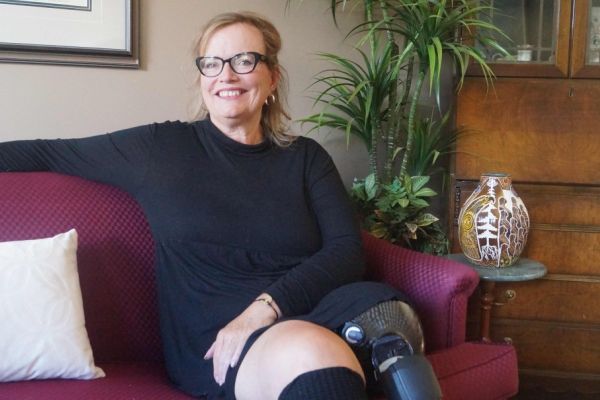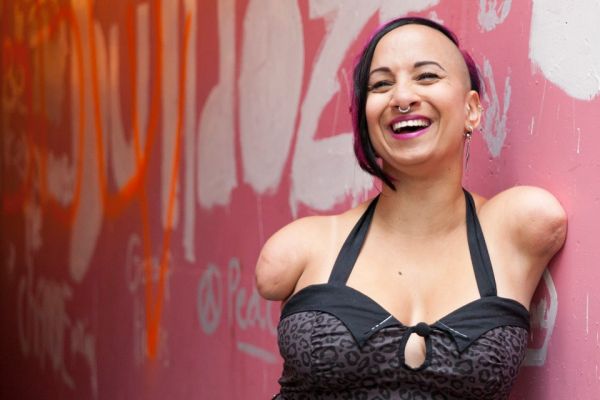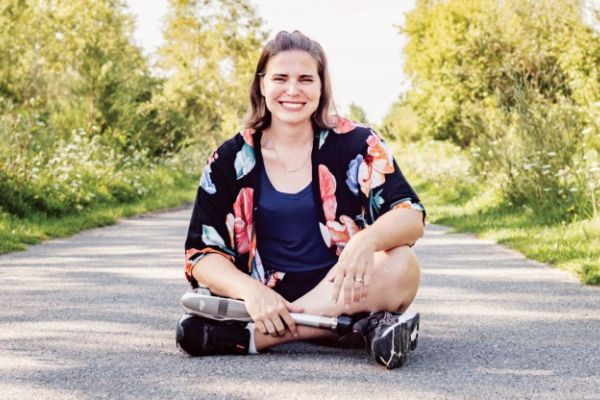Shaping Self-Esteem: Mary Anne Jackson
Author: Thrive Staff Writer

The happily married, 56-year-old mother of three grown children is matter-of-fact about her missing limb. But it wasn’t always that way.
A congenital amputee, she grew up in Toronto during the 60s and 70s, a time when inclusion wasn’t part of the conversation.
Like many amputees, Mary Anne grew up wearing a succession of artificial limbs. When she was ten she was fitted with a body-powered upper-extremity prosthesis, with the figure-8 harness. It didn’t help her self-esteem as a teenager when she got the ignominious nickname, Captain Hook. “I put on a strong face, but inside I felt differently. There were a lot of tears from being excluded from social activities because I only had one hand.”
Amazing advances in technology have changed perceptions of disability. But so has fashion. Thanks to the popularity of tattoos, more prosthesis wearers are forgoing conventional flesh-coloured ones that blend in for ones that stand out, expressing their personality. Blending in with others became especially important when Mary Anne started her career. That’s when she discovered the Pillet Hand. For Mary Anne, it was a game changer in terms of how it improved her self-image. “I’m not trying to hide anything. People ask about it, but they’re not asking about what happened to me. They’re asking about the arm which is cool.”
Like many amputees, Mary Anne grew up wearing a succession of artificial limbs. When she was ten she was fitted with a body-powered upper-extremity prosthesis, with the figure-8 harness. It didn’t help her self-esteem as a teenager when she got the ignominious nickname, Captain Hook. “I put on a strong face, but inside I felt differently. There were a lot of tears from being excluded from social activities because I only had one hand.”
Amazing advances in technology have changed perceptions of disability. But so has fashion. Thanks to the popularity of tattoos, more prosthesis wearers are forgoing conventional flesh-coloured ones that blend in for ones that stand out, expressing their personality. Blending in with others became especially important when Mary Anne started her career. That’s when she discovered the Pillet Hand. For Mary Anne, it was a game changer in terms of how it improved her self-image. “I’m not trying to hide anything. People ask about it, but they’re not asking about what happened to me. They’re asking about the arm which is cool.”











 How to resolve AdBlock issue?
How to resolve AdBlock issue?